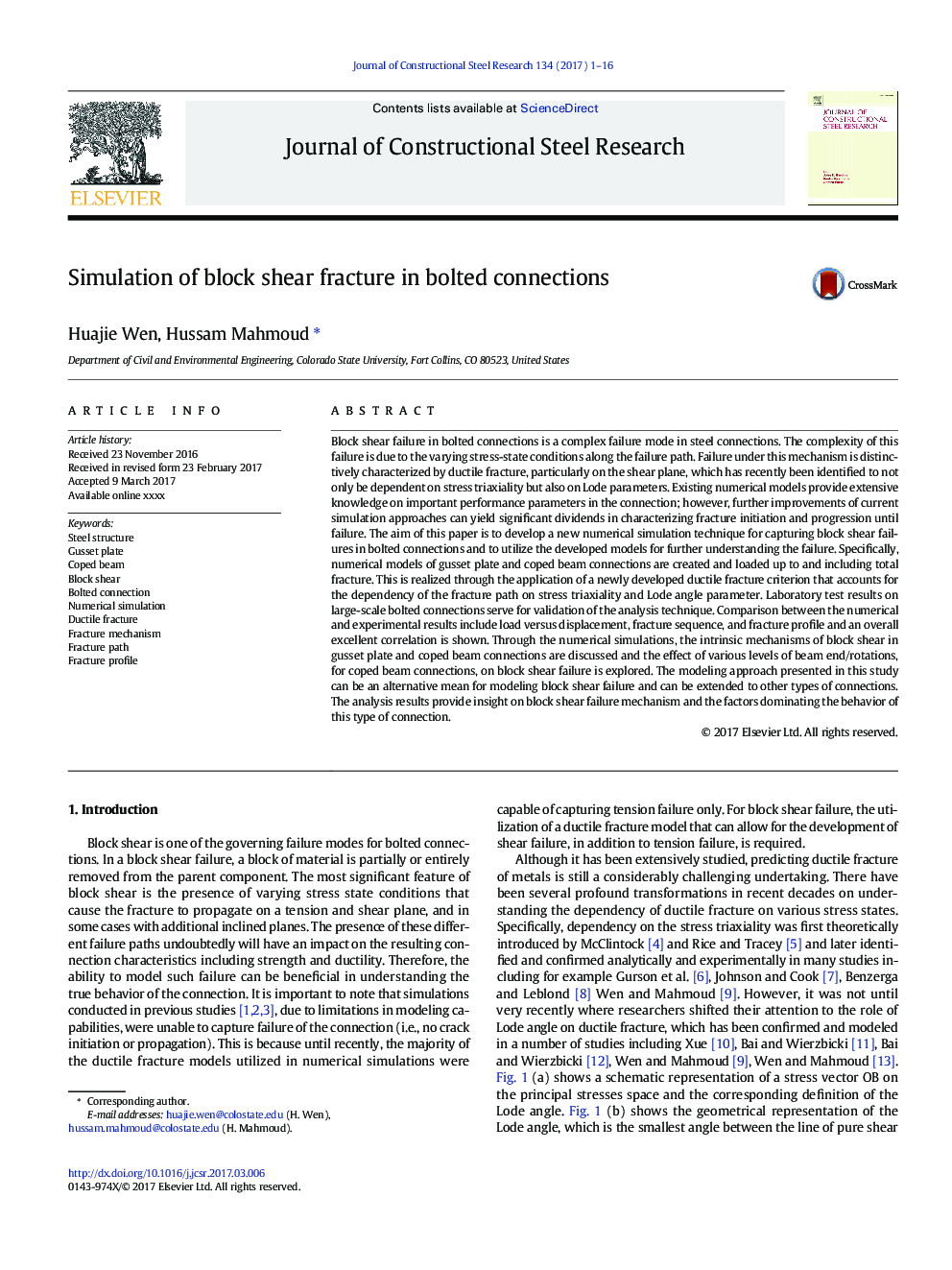| Article ID | Journal | Published Year | Pages | File Type |
|---|---|---|---|---|
| 4923414 | Journal of Constructional Steel Research | 2017 | 16 Pages |
Abstract
Block shear failure in bolted connections is a complex failure mode in steel connections. The complexity of this failure is due to the varying stress-state conditions along the failure path. Failure under this mechanism is distinctively characterized by ductile fracture, particularly on the shear plane, which has recently been identified to not only be dependent on stress triaxiality but also on Lode parameters. Existing numerical models provide extensive knowledge on important performance parameters in the connection; however, further improvements of current simulation approaches can yield significant dividends in characterizing fracture initiation and progression until failure. The aim of this paper is to develop a new numerical simulation technique for capturing block shear failures in bolted connections and to utilize the developed models for further understanding the failure. Specifically, numerical models of gusset plate and coped beam connections are created and loaded up to and including total fracture. This is realized through the application of a newly developed ductile fracture criterion that accounts for the dependency of the fracture path on stress triaxiality and Lode angle parameter. Laboratory test results on large-scale bolted connections serve for validation of the analysis technique. Comparison between the numerical and experimental results include load versus displacement, fracture sequence, and fracture profile and an overall excellent correlation is shown. Through the numerical simulations, the intrinsic mechanisms of block shear in gusset plate and coped beam connections are discussed and the effect of various levels of beam end/rotations, for coped beam connections, on block shear failure is explored. The modeling approach presented in this study can be an alternative mean for modeling block shear failure and can be extended to other types of connections. The analysis results provide insight on block shear failure mechanism and the factors dominating the behavior of this type of connection.
Keywords
Related Topics
Physical Sciences and Engineering
Engineering
Civil and Structural Engineering
Authors
Huajie Wen, Hussam Mahmoud,
